History

2026
Based on years of research and development, the Certifying Exam will launch in 2026. This new assessment replaces the Oral Exam.

2025
A dyad model of Executive leadership is adopted. Melissa A. Barton, MD (Left), assumes the role of Executive Director, Professional and Clinical Affairs. Kathleen C. Ruff, MBA (Right), becomes the Executive Director, Administrative Affairs.

2025
ABMS approved ABEM’s request to recognize expertise in Emergency Behavioral Health (EBH) through a Focused Practice Designation (FPD). EBH physicians will increase access to care for emergency department patients seeking acute, unscheduled mental health treatment.

2024
MedTox continuing certification moves to MyToxCert — shifting from a high-stakes exam administered in a testing center to modules that physicians can take from home. The switch to MyToxCert emphasizes relevant content, saves physicians time, and better accommodates their busy schedules.

2023
Certification in Health Care Administration, Leadership, and Management (HALM) is approved by ABMS as a subspecialty. This new subspecialty certification is geared toward institutional leaders, including emergency physicians who work in community hospitals. ABEM serves as the administrative board; the American Boards of Anesthesiology, Family Medicine, and Preventive Medicine are co-sponsoring boards.

2023
EMS continuing certification moves to MyEMSCert — shifting from a high-stakes exam administered in a testing center to modules that physicians can take from home. The switch to MyEMSCert emphasizes relevant content, saves physicians time, and better accommodates their busy schedules.

2022
The ConCert exam sunsets and is permanently replaced by MyEMCert.
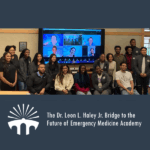
2022
The Dr. Leon L. Haley, Jr., Bridge to the Future of Emergency Medicine Academy was created. This mentorship program honors the legacy of the late ABEM Board Member, Dr. Haley.
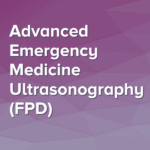
2021
To expand opportunities for practicing emergency physicians, ABEM implements the first Focused Practice Designation (FPD) for Advanced Emergency Medicine Ultrasonography (AEMUS) and supports the growth of training programs in this specialty.

2021
MyEMCert is launched as an alternative to the high-stakes continuing certification exam, which is taken once every decade. This online platform encourages learning, and modules can be taken frequently. Learn more

2021–Current
ABEM becomes accredited by the National Commission for Certifying Agencies (NCCA) after meeting its quality standards as well as GuideStar’s Platinum Status for financial transparency. These recognitions are currently maintained.

2020
Hala H. Durah, MTA, becomes ABEM’s first public member to serve as a Board Director. The public member position was established to bring public and patient advocacy expertise to the ABEM Board of Directors.

2020
During the COVID-19 pandemic, the Oral Exam and ConCert Exam moved to a virtual platform. Physicians could continue to become certified at a time when the public needed them.

2013
The ABMS approved the co-sponsorship of Anesthesiology Critical Care Medicine (ACCM) between the American Board of Anesthesiology (ABA) and ABEM.

2012–2024
Earl J. Reisdorff, MD, is ABEM’s third Executive Director. Dr. Reisdorf actively sought innovations that would make certification more relevant and convenient for emergency physicians. His compassionate, thoughtful leadership helped implement a system of physician-focused engagement and service.

2011
The ABMS approved the co-sponsorship of Internal Medicine Critical Care Medicine (IM-CCM) between the American Board of Internal Medicine (ABIM) and ABEM.
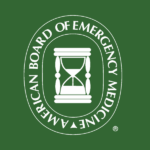
2005
ABEM administered the last paper-and-pencil written certification exam. Computer-delivered exams were developed and would be administered in 2006. The name of the “written” exam was changed to “qualifying” exam.

2005
The bylaws were amended to establish a Board composed entirely of emergency physicians. Previous to this change, sponsoring boards (ABIM, ABOG, ABP, ABPN, and ABS) had members on ABEM’s Board of Directors.

2001
The Core Content Task Force II received approval from the sponsoring organizations for the Model of the Clinical Practice of Emergency Medicine (EM Model). The model was adapted for use as an examination blueprint in all ABEM exams. A new EM Model is developed and approved every few years.

2000–2010
Mary Ann Reinhard, PhD, was selected as ABEM’s new Executive Director. Dr. Reinhard began her work with ABEM in 1985 as a faculty member in OMERAD and joined ABEM in 1988.

1999
ABEM and ABIM approved guidelines for a six-year combined training program. Upon completion, it provides physicians with the option for triple certification in Emergency Medicine, Internal Medicine, and Critical Care Medicine.

1999
The ABEM Board of Directors commissioned the Maintenance of Certification (MOC) Task Force. Its goal was to evaluate the current needs and trends in medical specialty recertification to develop a new approach to recertification.

1997
ABEM established the Presentation to Training Programs (PTP) through which directors deliver information about ABEM certification to ACGME-accredited EM residency training programs. This program evolved and is currently known as the Residency Visitation Program (RVP).
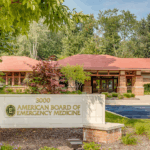
1993
ABEM dedicated a new headquarters building in East Lansing, Michigan.

1992
ABEM, American Board of Internal Medicine (ABIM), and the American Board of Pediatrics (ABP) were approved by ABMS to issue certificates of added qualifications in Sports Medicine. It was agreed that each board would conduct its own credentialling according to its own published standards. The first Sports Medicine certification examination was administered on September 30, 1993.

1992
ABЕМ, the American Board of Pediatrics (ABP), and the American Board of Preventive Medicine (ABPM) jointly sponsored an application to ABMS for subcertification in Medical Toxicology. ABEM was selected as the administrative board. The application was approved by ABMS in 1992, and in 1994, the first Medical Toxicology Certification Exam was administered.

1991
ABMS approved the ABEM and American Board of Pediatrics (ABP) applications to co-sponsor a subspecialty in Pediatric Emergency Medicine (PEM). It then became the first subspecialty in Emergency Medicine. The first PEM certification exam was administered on November 17, 1992.

1989
ABEM was created to set a standard for the level of care patients should receive in Emergency Departments across the US. Overcoming resistance, ABEM’s second attempt to gain primary board status was approved by the American Board of Medical Specialties (ABMS). Our hourglass logo represents this historical journey. Learn more
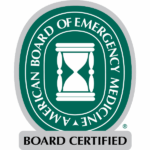
1989
ABEM offered recertification for the first time in 1989. To stay certified, physicians needed to complete specific requirements every 10 years, which included passing the ConCert Exam.

1980
ABEM offers the first Oral Certification Exam. Physicians travel to Chicago to take the exam and demonstrate their ability to provide the highest standard of emergency care. Those who pass are the first to become ABEM certified.

1979–1999
ABEM’s first Executive Director, Benson S. Munger, PhD, was recognized for his insight, skill, and focus on the importance of establishing and nurturing the ABEM family with his creativity, leadership, and warmth. He retired in 1999.
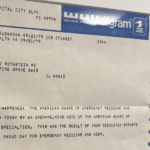
1979
Despite the backlash, Emergency Medicine becomes the 23rd recognized medical specialty in the house of medicine.

1976–Current
ABEM is active in the research field and has dozens of publications. To view our research history, click here.

1976
ABEM was incorporated in 1976. During this same period, there was increased interest in providing EM graduate training programs. Therefore, ABEM submitted an application to ABMS seeking primary board status, but it was denied.
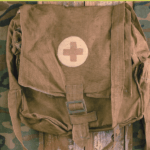
1960s
Soldiers in Vietnam were receiving better emergency care than citizens back home. A few doctors from Alexandria, VA, and Pontiac, MI, recognized a dire need to improve conditions. They banded together to map out a vision for the future of emergency care called the Alexandria-Pontiac Plan.

Mid 1900s
WWII doctors brought their knowledge of trauma procedures back home. “Emergency Rooms” are created but are often put in hospital basements and run by anyone from interns to dermatologists.



